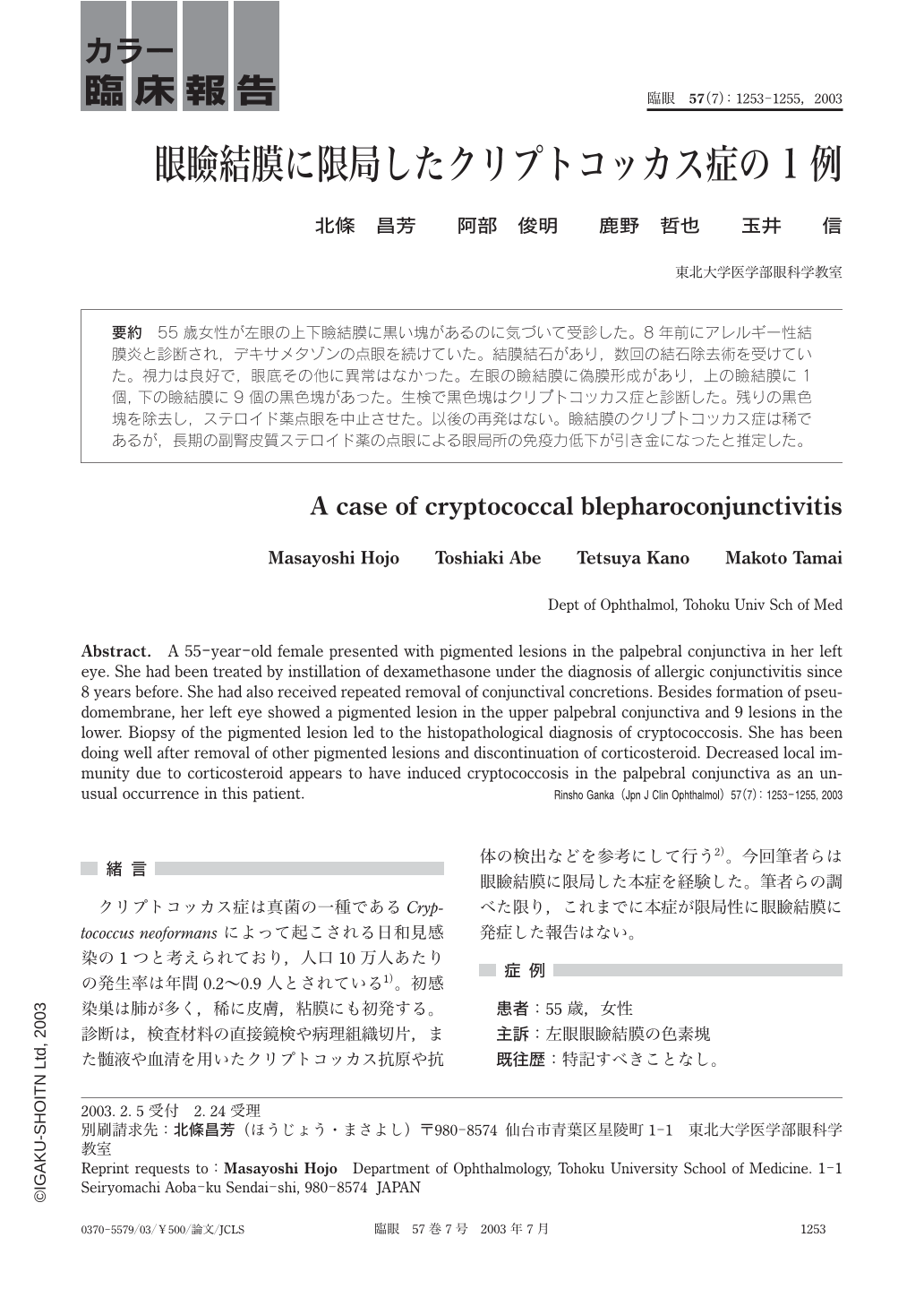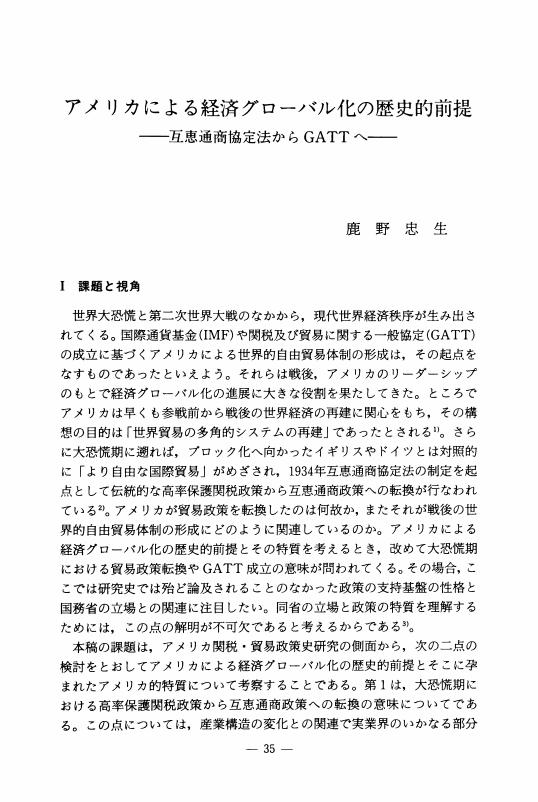148 0 0 0 OA コアンダ効果を受ける円柱に沿う壁面噴流の剥離の不安定性について
- 著者
- 八木田 幹 鹿野 一郎 清野 将人
- 出版者
- 一般社団法人 日本機械学会
- 雑誌
- 日本機械学会論文集 B編 (ISSN:03875016)
- 巻号頁・発行日
- vol.70, no.691, pp.594-601, 2004-03-25 (Released:2011-03-03)
- 参考文献数
- 17
This paper presents experimental and numerical results on the unstable flow along the surface of a circular cylinder in the Coanda effect. The unstable phenomenon depends on the nominal Reynolds number Re*=Uj√ (1/4) hD/ν and the nozzle height of the jet, h. In this paper, the changing phenomenon of two-dimensional jet direction is found numerically and the results are compared with the experimental ones. The numerical calculation is carried out by using the finite-difference method for the conditions of unstable phenomenon, that is, 1.5×104≤Re*≤2.5×104 and 0.100≤h/D≤0.200. Numerical results agree well with experimental results qualitatively. Also, it is found that the unstable phenomenon is sensitive to both Re* and h/D in the vicinity of h/D=0.10. Furthermore, a hysteresis phenomenon of jet direction by Re* was observed.
75 0 0 0 眼瞼結膜に限局したクリプトコッカス症の1例
要約 55歳女性が左眼の上下瞼結膜に黒い塊があるのに気づいて受診した。8年前にアレルギー性結膜炎と診断され,デキサメタゾンの点眼を続けていた。結膜結石があり,数回の結石除去術を受けていた。視力は良好で,眼底その他に異常はなかった。左眼の瞼結膜に偽膜形成があり,上の瞼結膜に1個,下の瞼結膜に9個の黒色塊があった。生検で黒色塊はクリプトコッカス症と診断した。残りの黒色塊を除去し,ステロイド薬点眼を中止させた。以後の再発はない。瞼結膜のクリプトコッカス症は稀であるが,長期の副腎皮質ステロイド薬の点眼による眼局所の免疫力低下が引き金になったと推定した。
32 0 0 0 OA ぺた語義:学習指導要領の改訂と共通教科情報科
20 0 0 0 OA ぺた語義:情報科教員を目指すにあたって -新学習指導要領実施に向けて準備すべきこと-
Society 5.0に向かう社会では,創造力と想像力を育み,課題解決を通じて価値創造をすることが求められている.そのための資質・能力を学校教育で育てることが必要である.高校では,全員が情報デザイン,プログラミング,データの活用などを含む「情報Ⅰ」を履修することになり,発展的な選択科目として「情報Ⅱ」も準備されている.これらを先生方が教えるために文部科学省や学会および民間企業から教員研修用教材が出されている.教科書ができてくる2021年の前半までには,科目の内容を把握し,1年間の授業イメージをもって教科書が選択できるように研修を進めていただきたい.
15 0 0 0 OA 過敏性腸症候群における アレキシサイミア傾向の影響
- 著者
- 鹿野 理子
- 出版者
- 日本行動医学会
- 雑誌
- 行動医学研究 (ISSN:13416790)
- 巻号頁・発行日
- vol.22, no.2, pp.65-70, 2016 (Released:2017-06-23)
アレキシサイミア(失感情症)は、シフネオスが古典的心身症患者の臨床観察から、心身症患者にみられる性格特性として提唱した概念である。アレキシサイミア傾向者は、情動の認識や表現ができず、情動を介したコミュニケーションが不得手で、情動体験を言語などの象徴化機能を通じて表現できない。そのため、しばしば心理療法が成立せずに治療が難渋する。アレキシサイミアの問題は情動制御の困難さにあるとされ、心身症のみならず、様々な精神疾患、死亡率や心臓死率にも関連することが報告されたが、情動制御が身体症状に関連するメカニズムは十分に解明されてはいない。過敏性腸症候群は、器質的所見がないものの、便通異常に伴う腹痛を慢性的に示す症候群で、ストレスがその発症や症状の増悪に影響する。最もよく見られる典型的な心身症のひとつである。過敏性腸症候群においてもアレキシサイミア傾向との関連が報告されている。アレキシサイミアでは特に陰性感情を調整することができずに、陰性情動に伴う身体的過覚醒の状態、自律神経系、および神経内分泌反応が亢進し、それらが身体症状の発症、および増悪因子となると推測されている。これまでのアレキシサイミア研究では、疫学研究はアレキシサイミアと心身症を含む様々な疾患群との関連を示し、神経生理学的研究、および脳科学研究はアレキシサイミアの特徴をこの仮説を支持する形で提示している。しかしながら、特に多くの神経生理学的研究では臨床症状を呈さない健常者でのアレキシサイミア傾向が高いものを対象としており、情動が身体症状に影響するメカニズムを解明するにあたり、疾患群での検討が必要である。本総説では、これまでのアレキシサイミアと過敏性腸症候群の関連を検討した先行研究を総括し、自験例を示し、過敏性腸症候群の脳腸相関の病態へのアレキシサイミア傾向の影響を考察する。
15 0 0 0 マッハ新書から考える情報という商品の在り方
9 0 0 0 OA 座談会 : 音声研究を語る : (小特集:<音声研究の新たな方向を探る>)
7 0 0 0 蛍光ナノダイヤモンドを用いた量子生体センサー
- 著者
- 鹿野 豊 藤原 正澄
- 出版者
- 一般社団法人 日本物理学会
- 雑誌
- 日本物理学会誌 (ISSN:00290181)
- 巻号頁・発行日
- vol.78, no.10, pp.593-598, 2023-10-05 (Released:2023-10-05)
- 参考文献数
- 47
計算・通信・暗号といった現代の情報社会の礎として情報理論がある.一方,情報社会を担うハードウェアは物理法則に従うデバイスによって構成されているため,物理法則によって制限された情報理論が必要である.中でも,量子力学の法則によって制限された情報理論は量子情報科学と呼ばれ,量子エレクトロニクス技術と融合しながら40~50年かけて発展してきた.デジタル社会の情報処理の最小単位を「ビット」と呼ぶが,同様に量子情報処理の最小単位を「量子ビット」と呼ぶ.一般に,量子ビットは外界環境に対して脆弱であり容易にその状態を変化させてしまう.この性質は量子ビットの品質向上にとっては負の側面であるが,見方を変えれば,環境因子を精密に測定できる能力を保持していることを意味している.そのため,このような物理系の応用は量子センサーと呼ばれている.量子センサーは単一原子レベルでの量子状態操作が可能であることから,従来のセンサーより高感度でかつ高い空間分解能であると期待されている.これらの情報技術や計測技術をまとめて,量子情報技術または量子技術と呼ぶようになった.そして近年,量子計算機の実装を中心に量子情報技術の研究開発が盛んに続けられている.量子情報技術の中でも,室温動作が可能な物理系として注目されているダイヤモンド中の窒素・格子欠陥(NV中心)にある電子スピンは,光検出磁気共鳴法を用いることで,量子状態を可視光で読みだすことができる.また,その量子状態はマイクロ波を印加することで容易に制御できる.ダイヤモンドNV中心の基底状態は電子3重項状態であり,超微細構造を持つ.この超微細構造が磁場,圧力,温度に対して変化するため,ダイヤモンドNV中心は室温で動作する量子センサーとして開発が進められ,理想的な環境において従来技術のセンサーより感度が向上しているということが示されてきた.一方で,生体試料などの実際に調べたい環境において,ダイヤモンド量子生体センサーがどのような性能を示し,これまでに得ることができなかった知見をもたらすことができるかは分かっていなかった.そこで,人工的に作製された蛍光ナノダイヤモンドを量子センサーとして生体試料に微小ガラス管を用いて投入し,生体試料内部の温度を局所的に計測した.具体的には,「生物学研究の未来」として称されることもある線虫(C. elegans)というモデル生物を生体試料として,薬剤投下時の発熱現象を計測した.まだ,薬剤投下時の発熱は分子科学的なメカニズムが解明されていない生理現象ではあるが,局所的な量子生体センサーを用いることで発熱現象自体が線虫内で起こることの証拠を得た.量子生体センサーの研究開発は,純粋なる物理学の基礎研究として捉えるのが非常に難しくなる一方で,他分野への応用を推進していく上で,他分野の未知なる現象を解明するために使われなければならない段階にある.そして,誰かが近い将来『量子情報技術の常識』という教科書を執筆した時, 量子情報技術分野の存在価値の大半が,その分野が他分野に対して果たす役割の大きさに依存することを忘れてはならない. と書き記されているであろう.
7 0 0 0 OA 座談会 Gender Equality 2.0 という発想 ─誕生秘話とその後の展開
- 著者
- 鹿野 豊 井野瀬 久美惠 渡辺 美代子
- 出版者
- 公益財団法人 日本学術協力財団
- 雑誌
- 学術の動向 (ISSN:13423363)
- 巻号頁・発行日
- vol.25, no.12, pp.12_97-12_102, 2020-12-01 (Released:2021-05-01)
- 参考文献数
- 4
7 0 0 0 OA ドゥルーズの『意味の論理学』の注釈と研究-出来事、運命愛、そして永久革命-
7 0 0 0 OA 未来の演劇と新しい哲学
- 著者
- 鹿野 祐嗣
- 出版者
- 早稲田大学演劇博物館
- 雑誌
- 演劇映像学
- 巻号頁・発行日
- vol.2012, pp.73-83, 2013-03-22
6 0 0 0 OA アメリカによる経済グローバル化の歴史的前提 互恵通商協定法からGATTへ
- 著者
- 鹿野 忠生
- 出版者
- アメリカ学会
- 雑誌
- アメリカ研究 (ISSN:03872815)
- 巻号頁・発行日
- vol.2000, no.34, pp.35-52, 2000-03-25 (Released:2010-10-28)
- 参考文献数
- 59
6 0 0 0 OA ヒトの情動メカニズムにせまる脳イメージング研究の進歩
- 著者
- 田代 学 鹿野 理子 福土 審 谷内 一彦
- 出版者
- 公益社団法人 日本薬理学会
- 雑誌
- 日本薬理学雑誌 (ISSN:00155691)
- 巻号頁・発行日
- vol.125, no.2, pp.88-96, 2005 (Released:2005-04-05)
- 参考文献数
- 49
- 被引用文献数
- 2 2
現代社会の複雑化とともに,うつ病や不安神経症,心的外傷後ストレス症候群(PTSD)といった多くの精神疾患の患者が増えている.その解決に向けた基礎的・臨床的研究が重要である.ヒトの情動メカニズムを解明するための方法論として,脳イメージングが注目されている.患者の頭部を傷つけることなく(非侵襲的に)生きた脳活動を観察できるのが大きな特長である.核磁気共鳴画像(MRI)を用いて扁桃体や海馬の形や大きさを調べる形態画像研究に加えて,生体機能を画像化する機能画像研究も精力的に行われている.機能画像では,ポジトロン断層法(PET)などを用いた脳血流や脳糖代謝の測定だけでなく,セロトニン,ドパミン,ヒスタミン神経系の伝達機能測定も行われている.研究デザインは,安静時脳画像を健常人と患者群の間で比較するものと,課題遂行中の脳の反応性を観察する研究(脳賦活試験)に分類される. うつ病では,前頭前野や帯状回における脳活動低下に加え,セロトニンやヒスタミンの神経伝達機能の低下がPETを利用した研究で明らかにされている.また海馬や扁桃体の体積減少も報告されている.ストレス障害であるPTSDでも類似した結果が報告されており,うつ病とストレス障害の関連が強いことが推測され,ストレスが様々な精神疾患の発症に関与していることも推測される.精神疾患の発症には性格傾向も強く影響しているといわれている.不安傾向や,自身の情動変化を認知しにくいアレキシサイミアなどの脳イメージング研究がすでに行われている.最近では,セロトニントランスポーターの遺伝子多型とうつ病発症率との関係や,遺伝子多型と扁桃体の反応性の関係なども調べられており,今後,遺伝子多型と脳の機能解剖学が融合される可能性がでてきた.ヒトの情動研究における今後の発展が大いに期待される.
6 0 0 0 OA 田沢湖カルデラとその噴出物
- 著者
- 鹿野 和彦 大口 健志 林 信太郎 矢内 桂三 石塚 治 宮城 磯治 石山 大三
- 出版者
- 一般社団法人 日本地質学会
- 雑誌
- 地質学雑誌 (ISSN:00167630)
- 巻号頁・発行日
- vol.126, no.5, pp.233-249, 2020-05-15 (Released:2020-09-17)
- 参考文献数
- 38
- 被引用文献数
- 2
田沢湖カルデラから2-1.8Maのある時期に噴出した火砕流密度流起源のテフラを記載した.下部は多面体~平板型ガラス片と岩片に富むテフラで,マグマ水蒸気爆発に伴ってカルデラ崩壊が始まったことを示唆する.上部は淘汰不良無層理の気泡型ガラス片に富むテフラで,岩屑なだれ堆積物と共存しており,カルデラ形成噴火最盛期に放出されたことを示唆する.これらは長期的にわたって侵食され田沢湖近傍でさえほとんど残っていない.カルデラ形成後の1.8-1.6Maには2つの溶岩ドームがカルデラ床に,2つの溶岩流が外輪山に噴出している.また,カルデラ形成前にはカルデラ南縁で少量の安山岩が噴出している.
6 0 0 0 IR ドゥルーズ『意味の論理学』における出来事の形而上学と命題論理学の関係についての考察
- 著者
- 鹿野 祐嗣
- 出版者
- 早稲田大学大学院文学研究科
- 雑誌
- 早稲田大学大学院文学研究科紀要. 第3分冊, 日本語日本文学 演劇映像学 美術史学 表象・メディア論 現代文芸 (ISSN:13417533)
- 巻号頁・発行日
- vol.59, pp.143-158, 2014-02-26
6 0 0 0 OA 永積安明教授沖縄渡航拒否事件
- 著者
- 鹿野 政直
- 出版者
- 法政大学
- 雑誌
- 沖縄文化研究 (ISSN:13494015)
- 巻号頁・発行日
- vol.8, pp.173-246, 1981-06-30
- 著者
- 大谷 大和 戸田 智基 猿渡 洋 鹿野 清宏
- 出版者
- 一般社団法人電子情報通信学会
- 雑誌
- 電子情報通信学会論文誌. D, 情報・システム (ISSN:18804535)
- 巻号頁・発行日
- vol.91, no.4, pp.1082-1091, 2008-04-01
- 被引用文献数
- 3
声質変換において,スペクトル特徴量系列の統計的モデル化技術の発展により,その変換性能は大幅に改善された.しかし,声質変換で用いられる音源モデルでは実際の音源を正確に表現できていないため,その変換音声の自然性は十分なものとはいいがたい.これを改善するために,スペクトル特徴量系列と同様に音源特徴量系列に対しても統計的なモデリングを行う必要がある.本論文では混合正規分布モデル(Gaussian Mixture Model: GMM)に基づく声質変換法の枠組みに対してSTRAIGHT混合励振源を導入する.提案法では,スペクトル特徴量系列及び音源特徴量系列に対して最ゆう推定(Maximum likelihood estimation: MLE)に基づく特徴量変換が行われる.客観評価実験並びに主観評価実験の結果より,提案法により音質,話者性変換精度が大きく改善されることを示す.
5 0 0 0 OA 10~18歳の子どもにおけるエナジードリンクの摂取実態と摂取者の身体症状・生活状況の特徴
- 著者
- 野井 真吾 千竃 健人 鹿野 晶子 田中 良 田邊 弘祐 山田 直子 渡辺 晃
- 出版者
- 一般社団法人 日本学校保健学会
- 雑誌
- 学校保健研究 (ISSN:03869598)
- 巻号頁・発行日
- vol.62, no.3, pp.166-177, 2020-08-20 (Released:2020-09-11)
- 参考文献数
- 32
Background: In Japan, the sales of energy drinks (ED) are growing rapidly. This has led to concerns that consumption of ED could have a negative health impact for individuals, including children.Objective: The purpose of this study was to confirm the intake of ED, the characteristics of consumers' physical symptoms/behaviors, and the perception of ED based on the results of a questionnaire survey for school children.Methods: The subjects were 5,984 children from 5th grade of elementary schools to 3rd grade of high school in 16 schools (5 elementary schools, 6 junior high schools, 5 high schools) at 6 rural and metropolitan Japanese prefectures. All investigations were conducted from May 2018 to March 2019. The questionnaire used in this study gathered information regarding ED intake, physical symptoms/behaviors, and the perception of ED.Results: The main results in this study were as follows. 1) Older students were more consume ED than younger students, and boys were more than girls to consume ED (elementary school: 45.5% boys, 27.9% girls, junior high school: 58.0% boys, 32.8% girls, and high school: 67.6% boys, 45.4% girls). 2) The analysis of the relationship between the ED intake frequency and physical symptoms indicated that the complaints of physical symptoms such as ‘headache (OR=1.573, 95% CI=1.281-1.931),' ‘stomachache (OR=1.545, 95% CI=1.224-1.949),' ‘appetite loss (OR=1.629, 95% CI=1.293-2.053),' ‘nausea (OR=1.667, 95% CI=1.251-2.222),' ‘tiredness (OR=1.285, 95% CI=1.023-1.614),' ‘lethargy (OR=1.382, 95% CI=1.120-1.706),' ‘dizziness (OR=1.369, 95% CI=1.108-1.692),' ‘fogginess (OR=1.621, 95% CI=1.231-2.134),' ‘cardiac pain (OR=1.537, 95% CI=1.168-2.021)' and ‘malaise (OR=1.557, 95% CI=1.267-1.915)' were higher in the group who consumed ED habitually (more than once a week). Similarly, in the analysis of the relation between the ED intake frequency and behaviors, ‘late bedtime (OR=1.338, 95% CI=1.092-1.640),' ‘bad sleep onset (OR=1.649, 95% CI=1.311-2.074),' ‘wake after sleep onset (OR=2.056, 95% CI=1.528-2.766)' and ‘lack of breakfast (OR=3.453, 95% CI=2.546-4.684)' were also higher in the habitual ED intake group. 3) The four factors, ‘vitality', ‘vogue,' ‘ineptness' and ‘distrust' were extracted regarding students' perception of ED held by children. Additionally, it was confirmed that the habitual ED intake group had higher factor scores of ‘vitality' and ‘vogue,' while their factor scores of ‘ineptness' and ‘distrust' were also significantly lower.Conclusion: In this study, we were able to show the real state of ED intake, the characteristics of consumers' physical symptoms/behaviors, and the perception of ED. Therefore, social countermeasures were considered necessary.
本研究では、小学第5学年37名を対象に命の授業を行い、独自に作成した自己概念とジェンダー・アイデンティティに関連した質問紙を用いて、授業の前後における変化と男女別の特徴について調査した。その結果、授業前は「違う性別の方が幸せだ」「不満があると聞いてくれる人がいる」という2項目に性差が見られ、授業後は授業前の項目に加えて「この性別に生まれて良かった」、「将来赤ちゃんが欲しい」、「元気がないと気づいてくれる人がいる」、「私の存在を認めてくれる人がいる」の6項目に増えた。男女別の詳細を見ると、男子は女子に比べ有意に「この性別に生まれて良かった」とする割合が高く、自己の性別に関して肯定的であるという特徴があった。一方、女子は男子に比べ有意に「違う性別の方が幸せだ」、「将来赤ちゃんが欲しい」、「不満があると聞いてくれる人がいる」、「元気がないと気づいてくれる人がいる」、「私の存在を認めてくれる人がいる」とする割合が高く、母性意識の目覚めや周囲のサポートや尊重してくれる存在に気づくという特徴があった。すなわち、性別によって自己の性に関する認識の違いが明確になっていくことが示唆された。
5 0 0 0 OA 道路沿いに出現するエゾシカに対する鹿笛の有効性
- 著者
- 鹿野 たか嶺 柳川 久 野呂 美紗子 原 文宏 神馬 強志
- 出版者
- 北海道開発技術センター
- 雑誌
- 「野生生物と交通」研究発表会講演論文集
- 巻号頁・発行日
- vol.5, pp.25-30, 2006-02-24
講演論文集販売はエコ・ネットワーク




